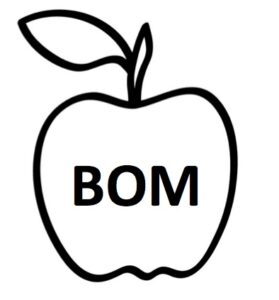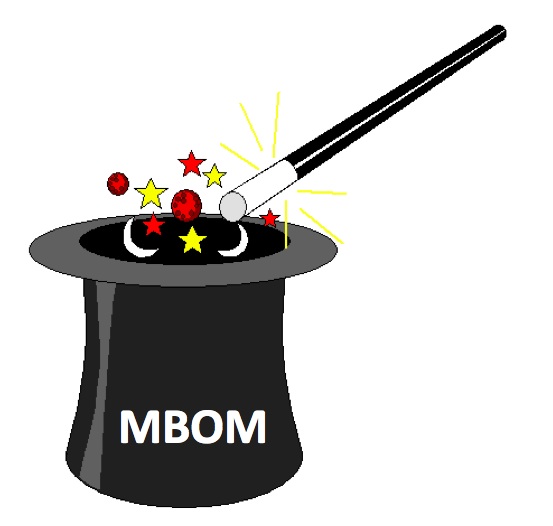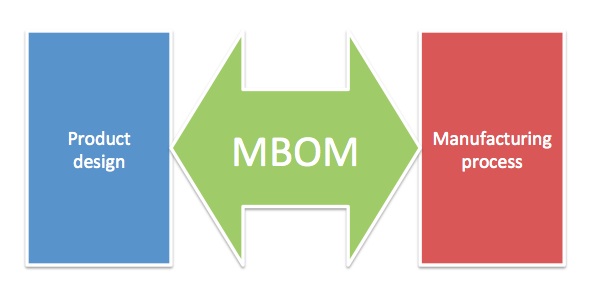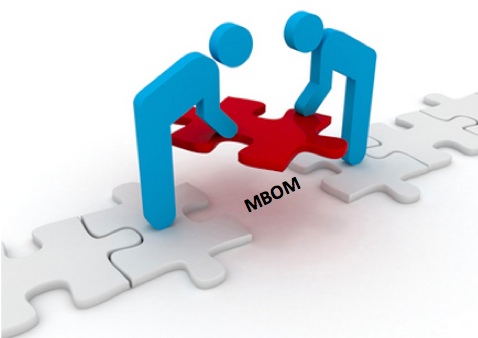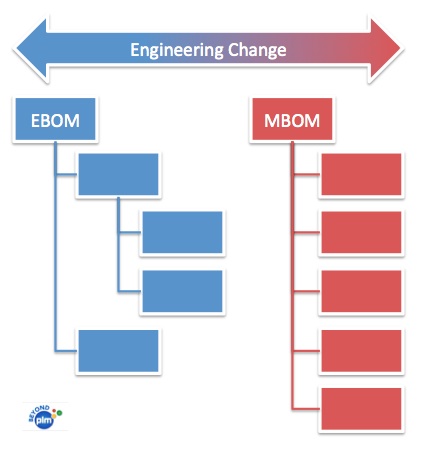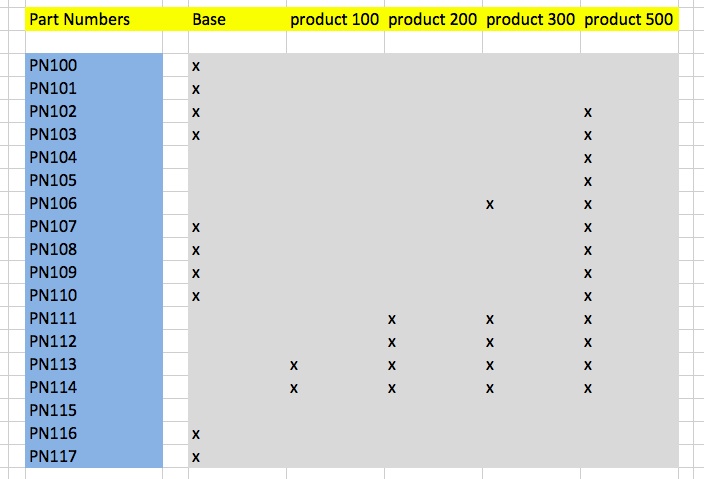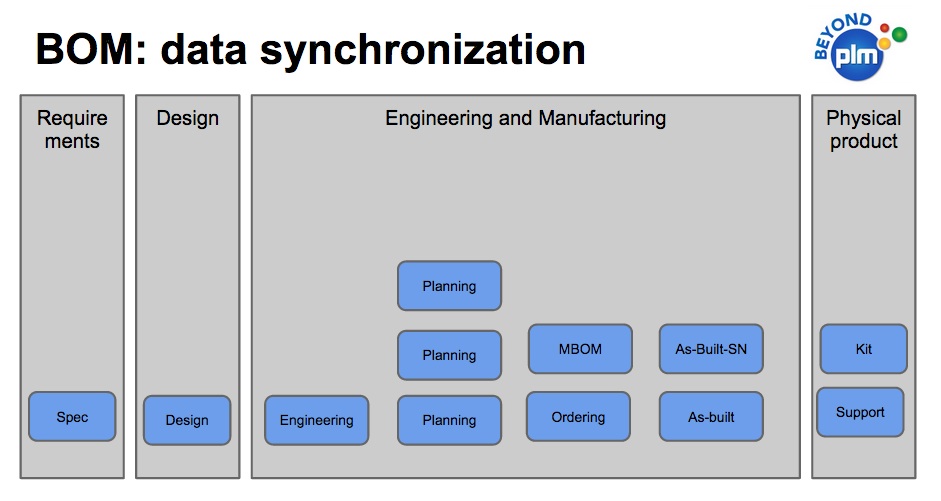![data-links]()
Engineering.com article by Verdi Ogewell earlier today is introducing a next step of PLM vs. ERP battle for ownership of manufacturing BOM. Navigate to the following link to read a very provoking interview with Siemens PLM CEO Chuck Grinstaff who says – “PLM should take over ownership of the manufacturing BOM too“.
I’ve been writing about the complexity of manufacturing BOM before. You can refresh your memories with the following two articles I wrote earlier this year: Manufacturing future will dependent on solving old PLM-ERP integration problems and Manufacturing BOM is the next cool thing in PLM.
BOM topic is fascinating and incredibly important for PLM companies. It boils down to the ability of PLM to control the complexity of variety of product definitions. The complexity of modern manufacturing environment is skyrocketing. Think about a combination of multiple disciplines involved into the process of design, engineering, manufacturing and support. Mechanical, electronic and software components are tightly integrated to produce modern airplanes, cars and other highly sophisticated products. However, to solve design complexity is just a beginning of the road. The next huge problem is to solve manufacturing problems. It all comes to manufacturing planning, procurement and shopfloor control. After, eventually, you end up with the result, which is represented by “as built” product data, support and maintenance systems.
To demonstrate complexity of BOM transformation I created a diagram below. What you can see below is different views of product data. It usually represented as a different views of Bill of Materials.
![plm-bom-data-synchronization]()
The following quote from Engineering.com article is one of my favorite to describe the importance of product data modeling. According to Chuck Grinstaff of Siemens PLM:
How important is the BOM issue among businesses? ”Incredibly important”, claims Chuck Grindstaff, and it’s not just a matter of semantics, ”The real issue around the Bill of Materials, whether for engineering, for manufacturing, for test or for procurement, is that each of these views of the product are important to the consumer of the BOM. Every view of the ‘bill’ needs to reconcile to other views and must remain accurate within the context of the total product during each stage of development. We believe that each of these viewpoints needs to be configurable from a common definition; from a single source of truth into the context for each of the engineers. For that reason it’s important to get it right. You can call it ”a battle”, yes, but the point still is that a PLM system is the best environment to manage this complexity.”
PLM vendors arguing towards full control of all aspects of BOM by PLM platforms and tools. The main battle is with ERP systems. Historically and traditionally, ERP companies are controlling part of product data starting from manufacturing planning and going future towards procurement and as built representations. It created well-known status of engineering vs. manufacturing balance. However, future demands of deep manufacturing integration brings PLM vendors to think that to take over MBOM (or more specific, manufacturing planning BOM) will deliver better solution for product complexity management.
The desired status for PLM vendors is to push ERP down towards procurement only and manage manufacturing BOM as part of PLM database. Here is another passage from Engineering.com article quoting Peter Billelo of CIMdata explaining why it can be reasonable from PLM vendors’ standpoint:
”ERP solutions generally do not actually optimize or have development tools for defining what the manufacturing BOM is. They just focus on executing a defined Bill of Material. So if I look at what Siemens is doing they are based on developing what that mBOM should be and optimizing that BOM. Quite frankly I don’t see any of the ERP vendors spending much time, if any time, at all at actually doing that. That said it makes sense for Chuck to claim the ownership since they have the tools to make changes, analyze and optimize the BOM.”
Engineering.com article made me think again about complexity of data management and integration in product development. It is certainly complex thing to manage multiple aspects of product data – design, engineering and manufacturing. To ensure data accuracy, both PLM and ERP systems must be well synchronized, which requires multiple very complex data transformation. The “sync” is king of the road on the PLM-ERP highway connecting engineering and manufacturing organizations.
Current enterprise data management paradigm is based on the RDBMS architecture that fundamentally provides a storage for all aspects of product data. TeamCenter is probably one of the best systems to support the complexity of product data representation. By moving manufacturing planning BOM to TeamCenter (or other PLM system), PLM vendors can decrease complexity of data synchronization between two complex views – engineering and manufacturing planning. ERP system role in this situation will be limited to procurement function and management of master production schedule.
However, Siemens PLM is not alone in their desire to take control of complete product structure management and all aspects of BOM. My earlier article – PLM and Zero BOM errors speaks about how Dassault Systems ENOVIA strategy to simplify the complexity of BOM synchronizations between design and engineering environment. This is a bit different aspect, but still represents the desire of PLM companies to solve BOM synchronization problem.
What is my conclusion? The problem of data synchronization between different BOM representations is a real one. The level of complexity is huge. PLM companies are trying to leverage their sophisticated data platform to control the overall product data complexity. The fight is two fold – technical and political. The heart of every CIO is usually with ERP system. PLM companies need to think how to deliver technologies to solve the level of integration complexity. In my view, this is a key to win MBOM battle. Just my thoughts…
Best, Oleg
photo credit: elcovs via photopin cc
![Share]()
The post PLM vendors’ fight over BOM will require to solve data synchronization problems appeared first on Beyond PLM (Product Lifecycle Management) Blog.



 Manufacturing Bill of Materials or MBOM. Where it belongs and how to support it right? Does it part of your ERP system? PLM system? Is it a piece that normally fails between chairs of engineering and manufacturing? In PLM development, manufacturing BOM is usually a piece of functionality that raises lots of disputes and inconsistencies. PLM vendors usually put MBOM as part of the overall PLM solution. Few links can lead you to
Manufacturing Bill of Materials or MBOM. Where it belongs and how to support it right? Does it part of your ERP system? PLM system? Is it a piece that normally fails between chairs of engineering and manufacturing? In PLM development, manufacturing BOM is usually a piece of functionality that raises lots of disputes and inconsistencies. PLM vendors usually put MBOM as part of the overall PLM solution. Few links can lead you to 
